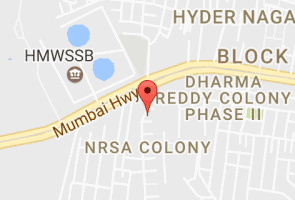Headlice and Ayurvedic Treatment
Head lice are very small wingless insects that live on the human scalp. They are generally tan in colour but since they feed by sucking blood, they may turn to brown or reddish colour after feeding. They crawl and cannot fly or jump like fleas. They are sensitive to light; so, if you look for them by parting the hair they will try to keep out of the light in the thicker parts of the hair. An adult female may lay 3-5 nits (egg casings) per day which are glued so strongly to hair shafts that only fingernails or a specially designed ‘nit’ comb can remove them (normal brushing or washing won’t get it!). The nits are laid on hair shafts very close to the scalp (for moisture and warmth) and will hatch out after 7-10 days. After hatching, the new lice mature in about 2-3 weeks and can lay a new generation of nits. Head lice cause a number of minor problems like itching, the possibility of secondary infections, and redness or small bite marks (like mosquito bites) on the scalp. Very rarely, a secondary infection might result in swollen glands in the neck or under the arms. However, the lice have never been established as a primary factor for any disease. The greatest harm associated with head lice results from the misguided use of caustic or toxic substances to eliminate the lice. A few lice on the head should not cause alarm. Head lice are reasonably mobile, and hence, contagious. They are spread by direct head-to-head contact, or by sharing items such as combs, brushes, scarves, caps, headphones, hair-bands, or helmets. They can also be transferred from person to person (or re-infested from the same person!) via furry stuffed animals; theatre, car, or bus seats and bedding.
Guidelines & Ayurvedic Remedies
- Apply the leaf juice of Indian hemp (Charas/Ganjaayi) or the paste of the leaves to the scalp and hair.
- Application of the paste of bitter almonds is also good if you are unable to procure the Indian hemp.
- The ointment made of the powder of the bark of Celastrus paniculata (Malakanguni) with mustard oil is another good remedy for head lice.
- Apply the paste made of the finely powdered seeds of custard apple (Seetaa-phal) with water at bedtime and cover the head with a cloth. The paste should not come in contact with your eyes.
- Soak the hair well with tobacco paste and cover with a cloth for two to three hours. Then rinse thoroughly with the emulsion of soap-nut (rita).
- Alum (Phitkari) is the non-herbal ayurvedic remedy for lice. Dissolve three grams of alum in half a litre of water. Apply this paste regularly on the head.
The first application of the delousing agent, if properly done, usually destroys all the live bugs but does not kill all of the eggs (nits). It is usual to see small lice the day after treatment. It means that new ones have hatched out. That is why a second treatment, 7-10 days after the first to destroy all the new lice that have hatched out since the first treatment and to kill them before they grow old enough to lay nits, is necessary.
Even though all the live lice may be killed by the treatment, nits are tougher to destroy. They usually cannot be removed with normal brushing or combing. Some parents just cut out the hair shafts that have nits attached to them. You can also use tweezers to remove them. Specially designed nit-combs made from the bone or ivory (with very closely spaced teeth) are available in the market.
If your child has lice, it is possible his environment, i.e., clothes, furry animal toys, coats, sofas, bedding, carpets, car seats, etc. may be infested. Live lice are not usually that much of a problem. However, they may live away from human host for as long as 72 hours and die after a day or so. They can be vacuumed off from sofas, carpets, etc. Bedding, clothing, towels, etc., can be washed in hot soapy water and dried in a hot drier. Brushes and combs can be soaked in hot water or alcohol for 10 minutes. Cover those—which cannot be washed—with plastic and leave for 10 days. This will allow time for any lice to starve, and for nits to hatch and the off-spring to starve.
Note
As we all are genetically different with different constitutions and patterns, we respond to treatments in many different ways. Hence Standard Ayurvedic Treatments are always individually formulated. This article is intended only for information. It is not a substitute to the standard medical diagnosis, personalized Ayurvedic treatment or qualified Ayurvedic physician. For specific treatment, always consult with a qualified Ayurvedic physician.
ADDRESS
Dr. Murali Manohar Chirumamilla, M.D.
(Ayurveda)
RAKSHA AYURVEDALAYA
Plot No. 13, H.No: 16-2-67/13,
Ramamurthy Nagar (CBCID Colony),
Hydernagar,
Landmark: Kukatpally Area, Metro Train Pillar No. MYP 29.
HYDERABAD.
PIN - 500 085. Telangana State
INDIA
CONTACT DETAILS
Mobiles: +91 (0) 9246575510, 9177445454
E-mail: muralimanohar2008@gmail.com
Web site: http://www.muralimanohar.com
Timings:9.30 a.m. to 7 p.m. Sunday 8 a.m. to 2 p.m
LOCATION MAP

